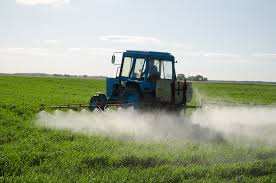06
Feb
California Regulators Sued for Allowing Increased Use of Toxic Fumigant without Public Input
(Beyond Pesticides, February 6, 2017) California Department of Pesticide Regulation (CDPR) rules that allow greater use of the highly toxic fumigant Telone, while decreasing protections for the public, have been challenged in California court. On January 31, attorneys representing Juana Vasquez, a farmworker in Ventura County, along with Californians for Pesticide Reform (CPR) and Pesticide Action Network North America (PANNA), filed suit in the Superior Court of California against the California Department of Pesticide Regulation (CDPR). The suit claims that CDPR failed to follow required public procedures in developing new rules for 1,3-Dicholopropene (1,3-D), which is an active ingredient in the product Telone and has many documented health risks, including cancer and kidney and liver damage.
In October 2016, CDPR released new rules that allow the continued use of Telone and decrease protections for public health by permitting increased usage. CDPR and many news outlets reported the rule change as a tightening of the restrictions, but in reality, the new rules increase the previous annual cap from 90,250 pounds to 136,000 pounds per township, a defined area of 6×6 miles. These new rules went into effect on January 1, 2017, allowing for 1,3-D’s continued use in strawberry fields, vineyards, almond orchards, and other crops around California.
According to a press release from PANNA, the lawsuit charges that CDPR approved the new rules for Telone without allowing for public notice, giving an opportunity for public comment, and providing a response to comments. It also claims that CDPR violated a state law that requires collaboration with scientists from the Office of Environmental Health Hazard Assessment (OEHHA) to develop health-protective rules. OEHHA expressed concerns regarding the sufficiency of the new rules, “including revised application limits and air concentration standards to protect nearby residents and workers from cancer risks.” The plaintiffs call for a new process that complies with state law, including revised regulations that are based on the recommendations of OEHHA.
“State officials ignored science and shirked public oversight as they ensured the continued and potentially expanded use of this cancer-causing pesticide,” said Natalia Ospina in a statement to PANNA, an Oxnard-based attorney with California Rural Legal Assistance representing the farmworker plaintiff. “This blatant regulatory failure continues to put rural and farmworker communities in harm’s way.”
1,3-D is a federally restricted-use soil fumigant used to kill nematodes, insects, and weeds. The use of the chemical in the production of strawberries came into prominence with the forced reduction of another fumigant, methyl bromide. Scientists became concerned about methyl bromide in the 1970’s, when it was linked to ozone depletion. Methyl bromide is still widely used in California to grow strawberries, despite its ban under the Montreal Protocol, but it will no longer be eligible for a critical use exemption after 2016. This phasing out of methyl bromide stimulated another class of toxic fumigants, which includes Telone.
In time, 1,3-D was revealed to be no better than its predecessor, raising concerns about the public health and environmental risks associated with its use. A 2014 publication by the Center for Investigative Reporting, Dark Side of the Strawberry, revealed that increased use of 1,3-D results in unsafe levels of the chemical in the air and that decisions behind 1,3-D monitoring and application rates are fraught with industry manipulation and risk reduction work-arounds. A 2016 case study out of the University of California, Los Angeles (UCLA) looked at three fumigants– Telone, chloropicrin, and metam salts— and found that:
- These pesticides may interact to increase the health risk for California farm workers and residents,
- Workers and residents are regularly exposed to two or more of these pesticides simultaneously, and
- CDPR does not regulate the application of multiple pesticides to prevent or decrease risks to human health, despite having authority to do so.
Additionally, in late September 2016, the Center for Environmental Health (CEH) filed a lawsuit against Dow Agrosciences LLC, Telone’s manufacturer, charging that the “chemical manufacturing giant” fails to warn communities across California about the dangers associated with wide use of the chemical Telone. The case focuses on the air pollution caused by the pesticide, which has been found to linger in the air for multiple days after application, disproportionately impacting the rural communities, often with large minority populations, that live in the immediate vicinity.
In a statement to PANNA, Ohlone Elementary teacher Melissa Dennis said: “DPR came last October to tell us the ‘good news’ that they measured cancer-causing Telone at 0.12 parts per billion in the air our schoolchildren breathe. How is that ‘good’? OEHHA scientists say we should be concerned at 0.1 parts per billion.
As teachers and parents, we’re worried and angry!” These documented hazards associated with fumigants and strawberry production emphasize the need to shift away from dependency on toxic chemicals and seek sustainable, organic solutions to crop production and feeding families. Toxic soil fumigants also destroy soil biota, which provides the basis for healthy soils, plants, and people. There are less toxic ways to grow strawberries and other crops than relying on these toxic fumigants. Growing strawberries organically has been shown to create healthier soils, higher quality fruit, and improve pollination success. Visit Beyond Pesticides’ website to learn more about supporting organic agriculture and making sustainable choices in the foods we eat.
Source: PANNA
All unattributed positions and opinions in this piece are those of Beyond Pesticides.










